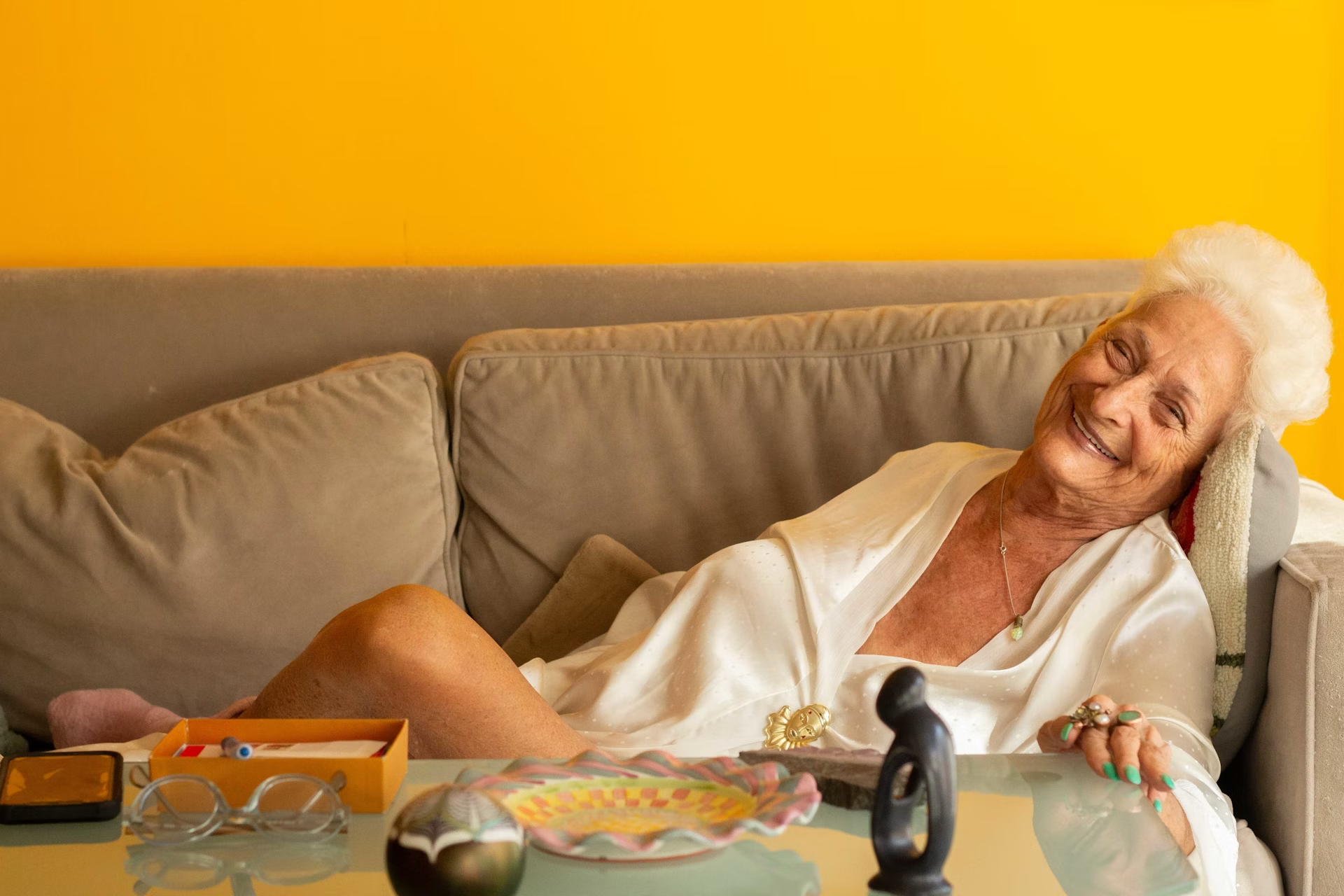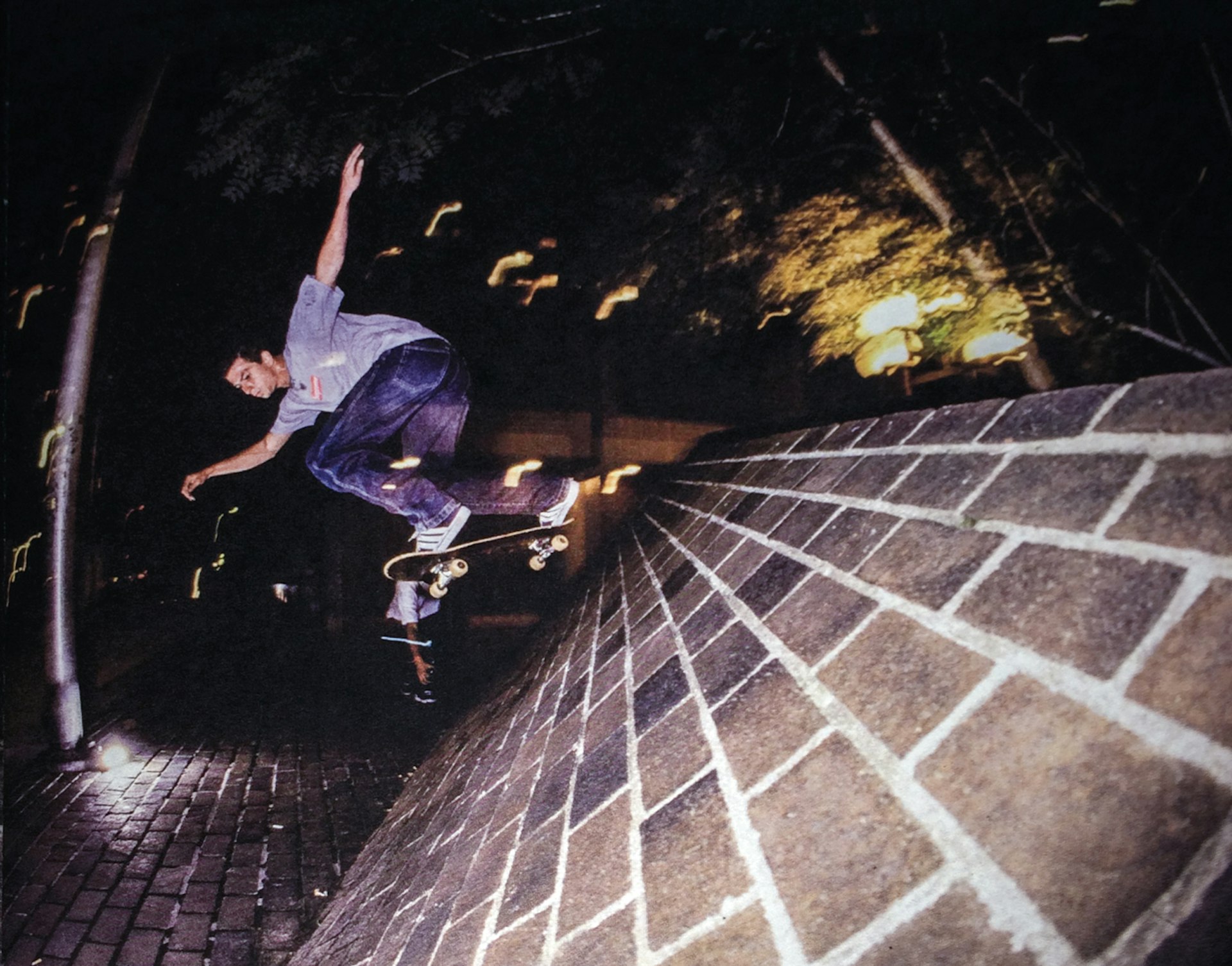
The 90s skate video that changed the face of counterculture
- Text by Mackenzie Eisenhour
- Photography by Eli Gesner
In March 1997, Zoo York premiered their first full-length video at the New York Underground Film Festival. Mixtape would be a radical departure from the skate video norm at the time. First and foremost, it was the biggest team video released by an East Coast skateboard company. It was the culmination of over a decade of rising influence for East Coast and specifically NYC skateboard culture that stood in stark contrast to the dominant beach-born Californian version. It was also the first time the true cores – the main nerves – of skateboarding, hip-hop, and graffiti crossed paths directly through the use of footage of live freestyle raps from The Stretch Armstrong and Bobbito Show on the radio, along with Eli Gesner’s visionary street-inspired art direction.
This wasn’t just a skate video using hip-hop, or a skate video filmed in NYC using graffiti or tag-style art – that had already happened plenty of times since the late ’80s. It was the actual active participants of those three realms, in full upswing, collaborating firsthand – on their native soil – in one video. Mixtape set the template for what raw NYC skateboarding should look, sound, and feel like. In many ways, that NYC template has today almost replaced the old Cali backdrop as the norm. Twenty-six years since its release, and on the occasion of hip-hop’s 50th anniversary, I spoke with the video’s creators, Eli Gesner and RB Umali to retrace how it came to be.
You would almost need a flowchart to map out all the evolutionary lines coming together for one video (and how many separate lines came out of it). But for the most part it begins and ends with Eli Gesner. In his words: “Back in the early ’80s, New York City was like a deserted skateboard island, so anyone who was even remotely interested in skateboarding, we all knew one another.” Through this cross-racial, cross-class-division camaraderie – Eli meets and becomes skate brothers with Damani Beasley (who passed away in ’91 from brain cancer and who Mixtape is dedicated to).
The two are from completely different worlds. Eli is white and from the upscale side of town and Beasley is black and from the projects. Yet, they form an unbreakable bond through their shared passions for skating, hip-hop, and graffiti. By the time Bruno Musso and Rodney Smith start SHUT Skates (arguably the first big NYC skate company) in the late ’80s, a teenage Eli is already respected enough in those worlds that they ask him to create their logo.
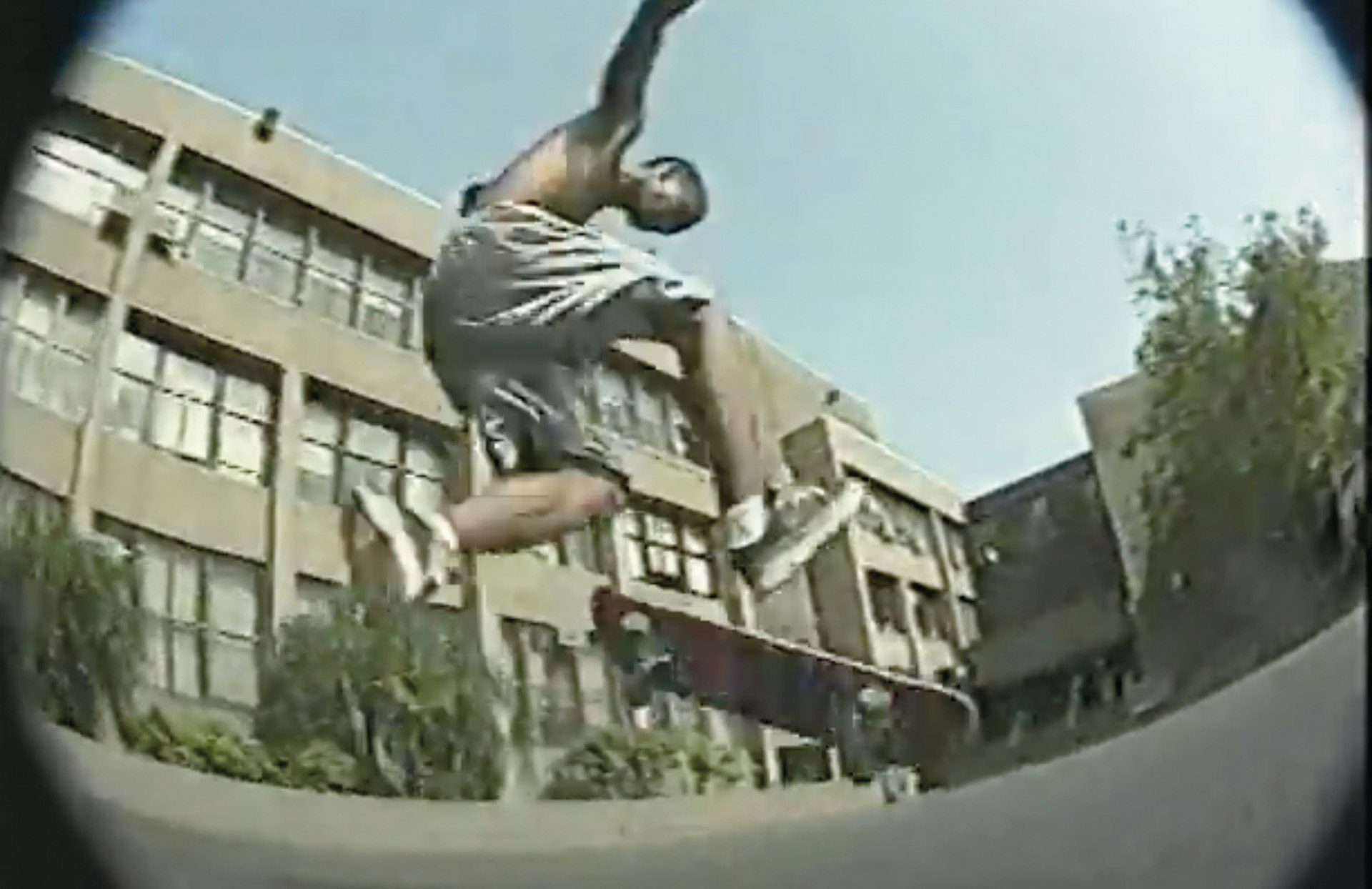
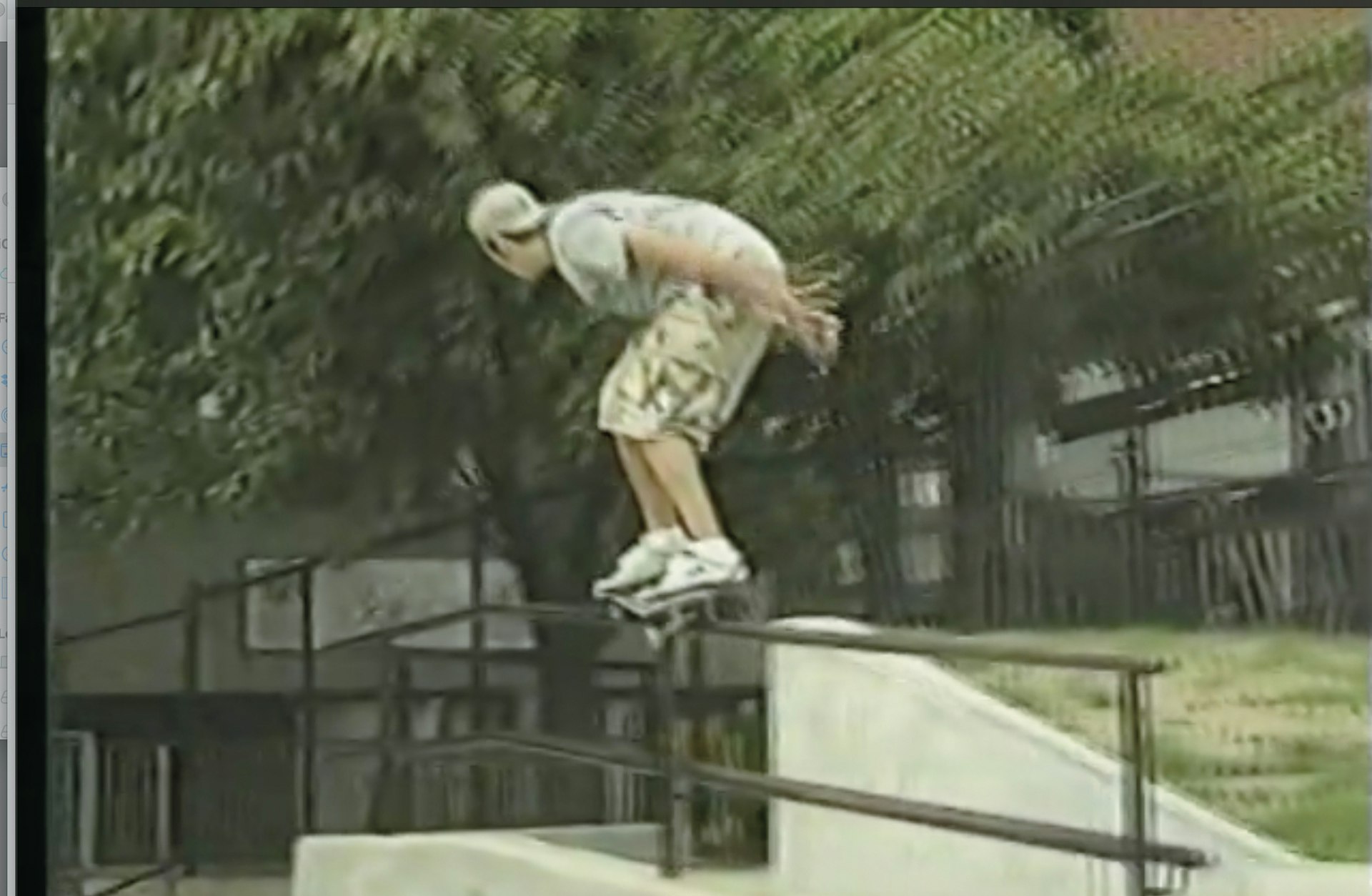
“They asked me to make a crest with crossed skateboards, the NYC skyline, and barbed wire. I honestly thought they were crazy. Skateboarding is a California thing, I thought, not a New York thing. We have hip-hop. Bruno and Rodney were far more visionary than I.
By ‘89 Beasley and Eli begin throwing the Trip parties at Mars nightclub. This one, seemingly small, event could be the subject of its own film (and it pretty much is with 2021’s documentary All the Streets are Silent. Watch that for the full scoop, like Eli giving Moby his first DJ gig there, Vin Diesel and Ben Stiller working as doormen, and Puff Daddy later copying them). But as it relates to Mixtape – through Mars, Eli meets Adrian Bartos and even helps choose the DJ name, DJ Stretch Armstrong.
“Through the Trip parties, Stretch and I became very close friends,” says Eli. “And when Stretch and Bobbito (Robert Garcia) joined forces to start their late night hip-hop radio show at Columbia University (1990-1998 WKCR-FM), I was in SVA Film School. I had to make shit for school and had access to cameras. It’s honestly as simple as that. ‘Large Professor is coming to the radio show tonight? What? Dope! I’m bringing my VHS camera.’ And then, over time, it slowly exploded.”
The Stretch and Bobbito Show today is credited with unveiling the likes of the Notorious B.I.G, Wu-Tang Clan, Jay-Z, Big L, the Fugees, NAS, Busta Rhymes, Big Pun, Fat Joe, and many others who went on to shape the next generation of hip-hop to the world. Much of this happened through the famous live freestyles. For example, Dante Ross signed Ol’ Dirty Bastard to Elektra after hearing him freestyle “Shimmy Shimmy Ya” live on WKCR in ‘93. The show was hip-hop history occurring in real time, and Eli just happened to be there filming it.
“When Stretch called me to say that Method Man and Ghostface were coming over, I dropped whatever I was doing to go film them.”
“When I shot Busta Rhymes (in ’91), he was completely unknown. It was a random event of kids just fucking around. But over the next few years, things became exponentially more serious. The rest of the world had not yet heard of Wu-Tang Clan but in NYC they were already notorious. When Stretch called me to say that Method Man and Ghostface were coming over, I dropped whatever I was doing to go film them.”
During the rise of the Trip parties and the emergence of the Stretch and Bobbito radio show, another series of key events lead to the birth of Zoo York in ’93. Eli explains, “Having a little reputation from doing NYC nightclubs, I got offered the chance to start Phat Farm, a new clothing company backed by Russell Simmons of Def Jam. Being an early adopter of Photoshop and Illustrator, Russell got me all the computer equipment I wanted (an extremely expensive undertaking in the early ’90s).”
“At the same time, due to crooked partners, SHUT Skates lost their warehouse and Bruno and Rodney abandoned ship. Rodney was caught off guard and got evicted from his home. I had an extra room at my place so I let him crash. I got to see firsthand that Rodney was 1000% into making another skate company out of NYC. Once again, I thought he was crazy. Soon enough it became clear to me that I owned zero stakes in Phat Farm, but with the unique advantage of having access to computer gear in ’93, Rodney, Adam Schatz, and I joined forces to start Zoo York.” The name Zoo York was passed on with blessings from the ’70s graffiti-writing/skateboarder crew “The Soul Artists of Zoo York” led by Mark ‘Al’ Edmonds.
After getting Zoo up and running after hours at Phat Farm, by ’94, the company set up their own offices in the meatpacking district. As a precursor to Mixtape, Zoo’s first audio visual offering came in the form of ’94’s 411 Industry Section. “I shot and conceived that whole part,” says Eli. “All our footage was dark, because in NYC back then, you could only really skate at night. And that was the opposite of sunny California. I doubled down, got a piece of clear plastic, spray painted black around the edge and set it up against a TV. I then re-shot the whole video off the TV. Double dark and dirty! Must have worked because 411 gave us ‘Best Industry Part’ that year.” With a team including Harold Hunter, Jeff Pang, Ryan Hickey, Mike Hernandez, Robbie Gangemi, Peter Bici, Vinny Ponte and more, Zoo was officially on the map.
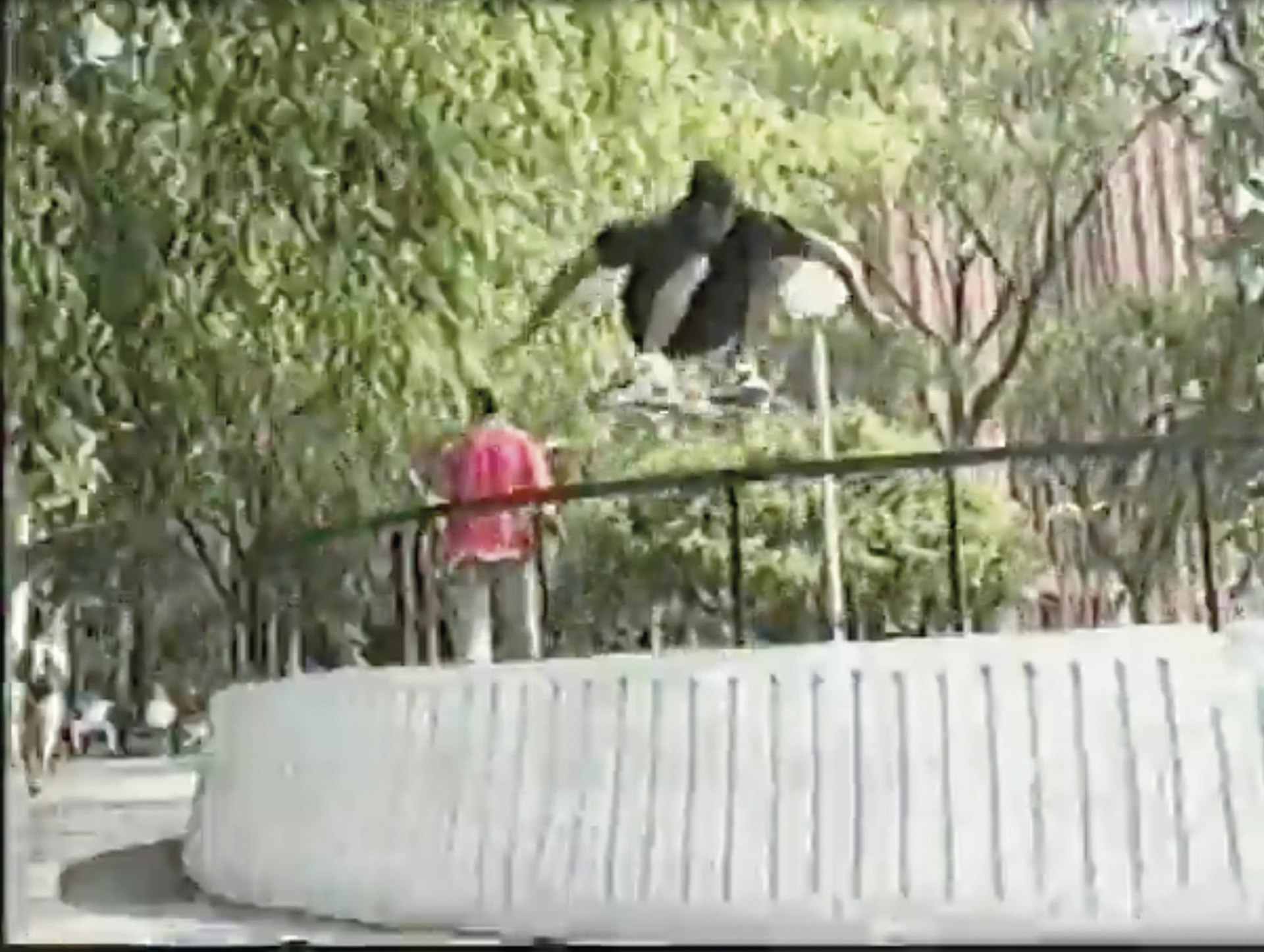
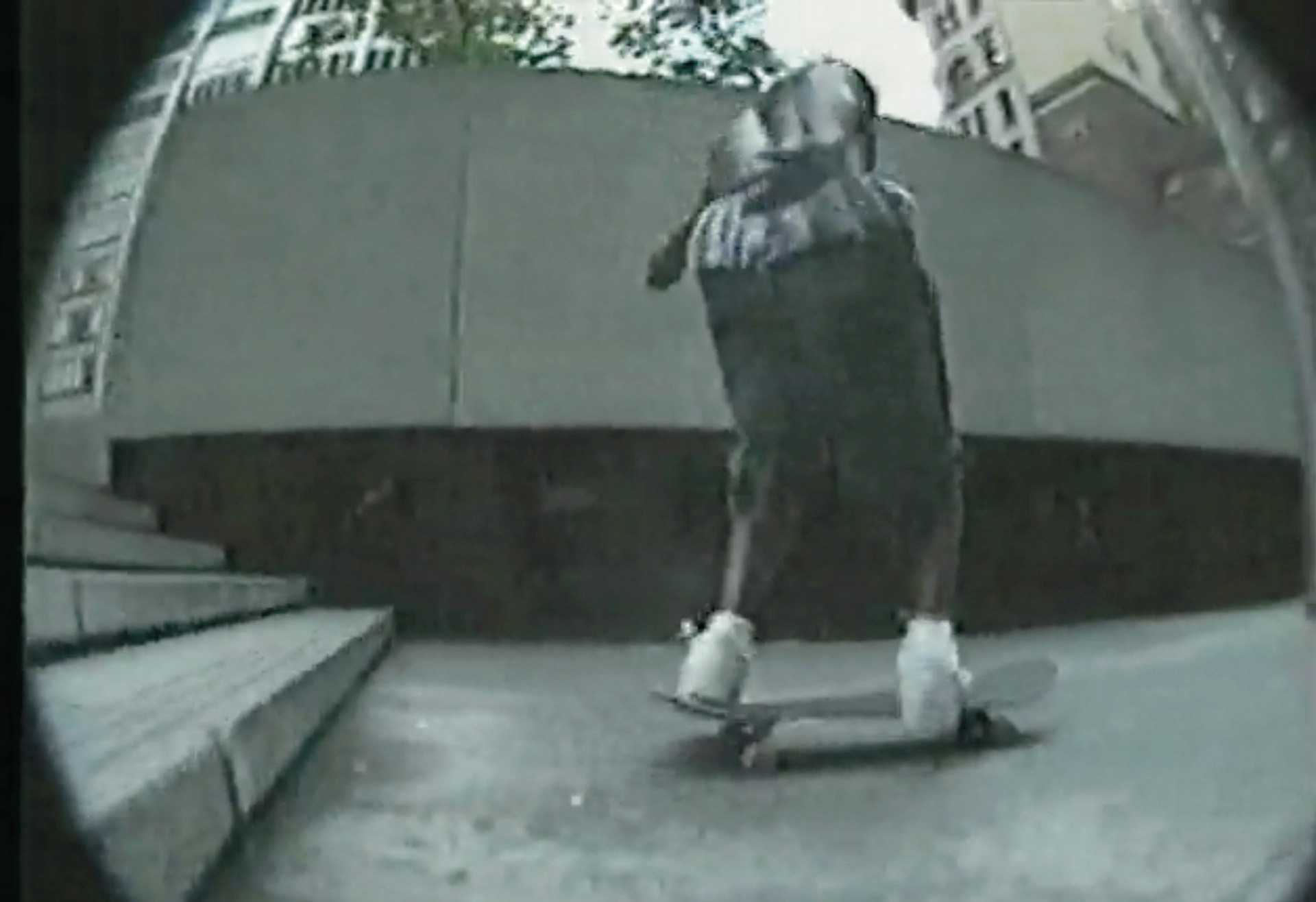

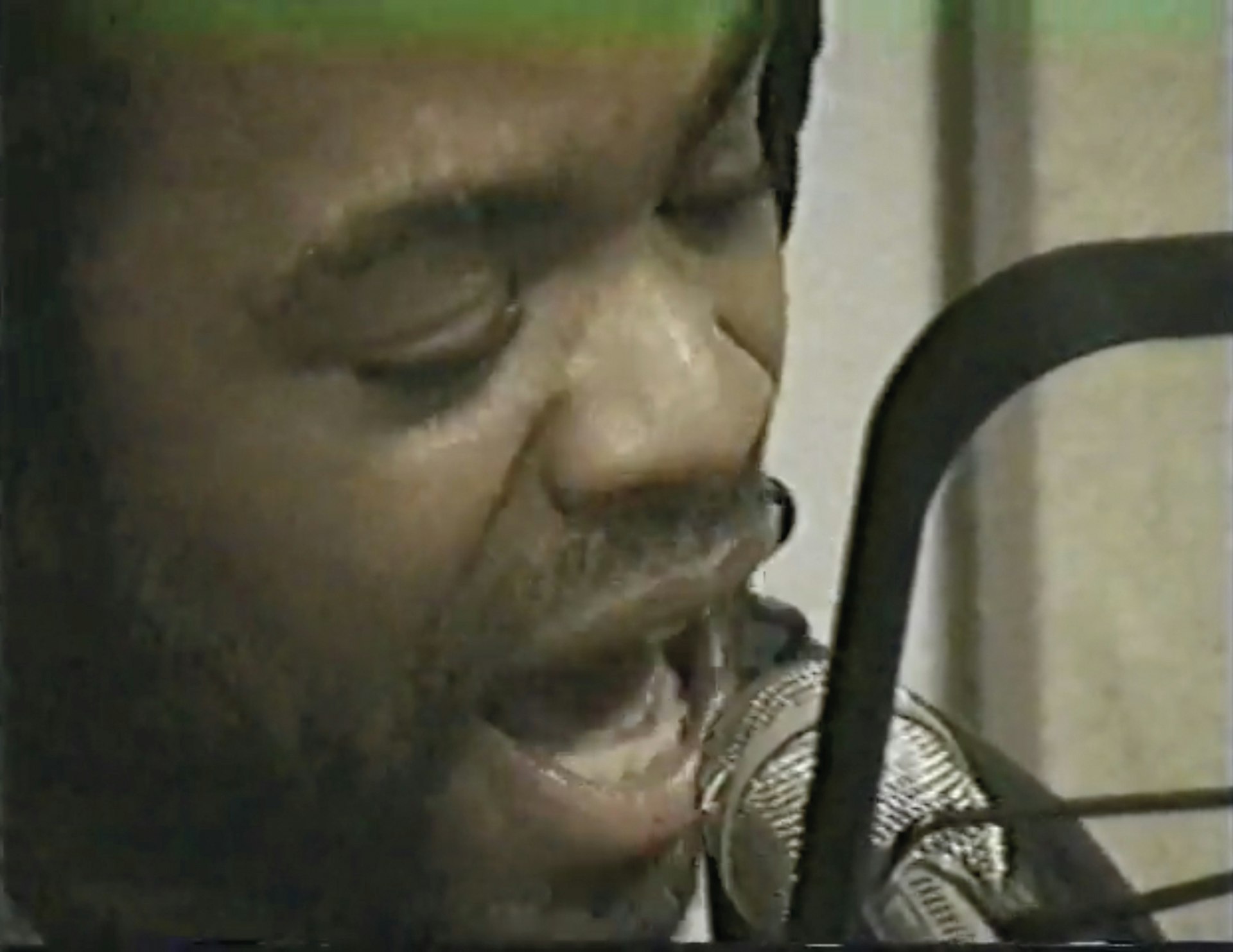
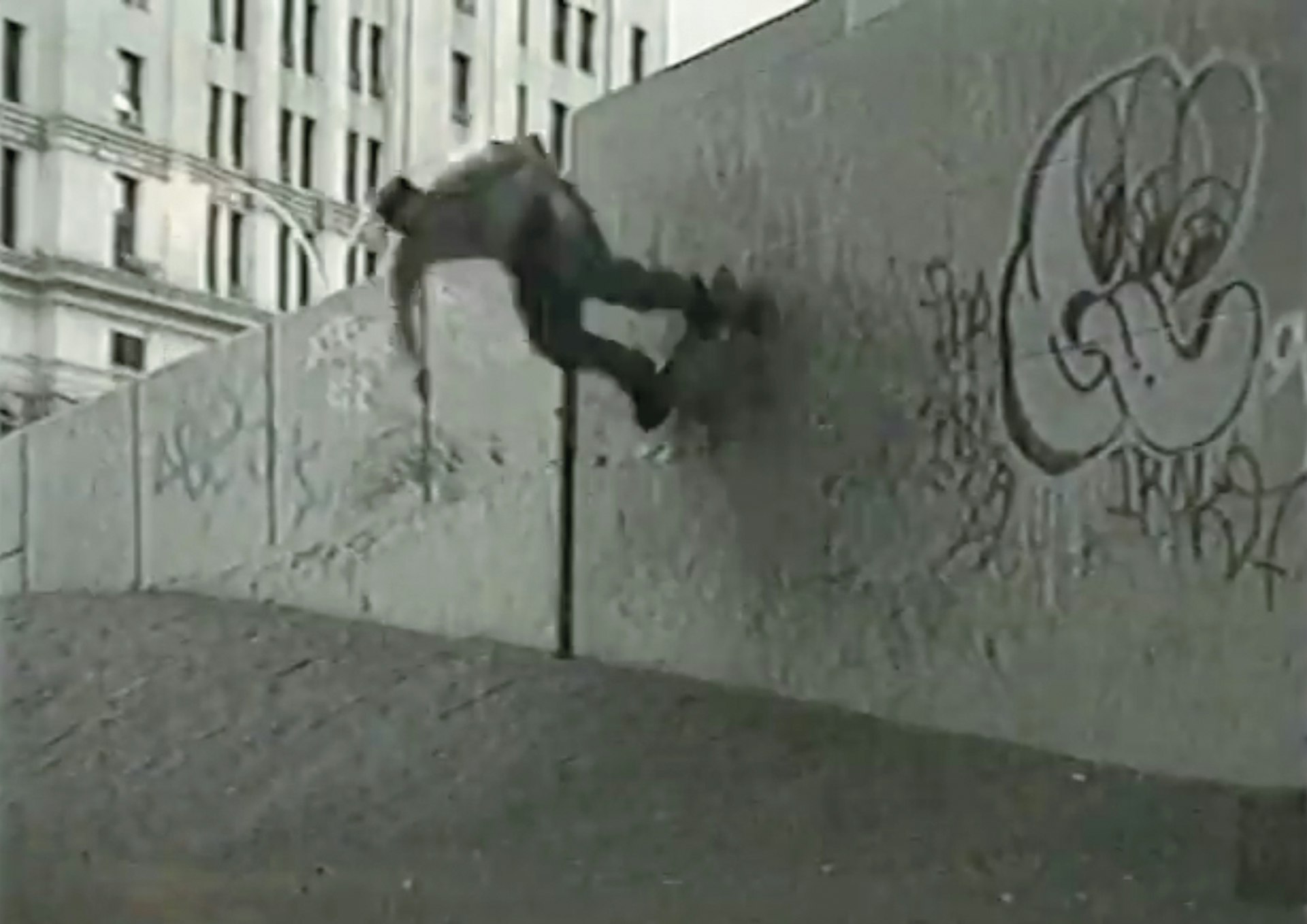
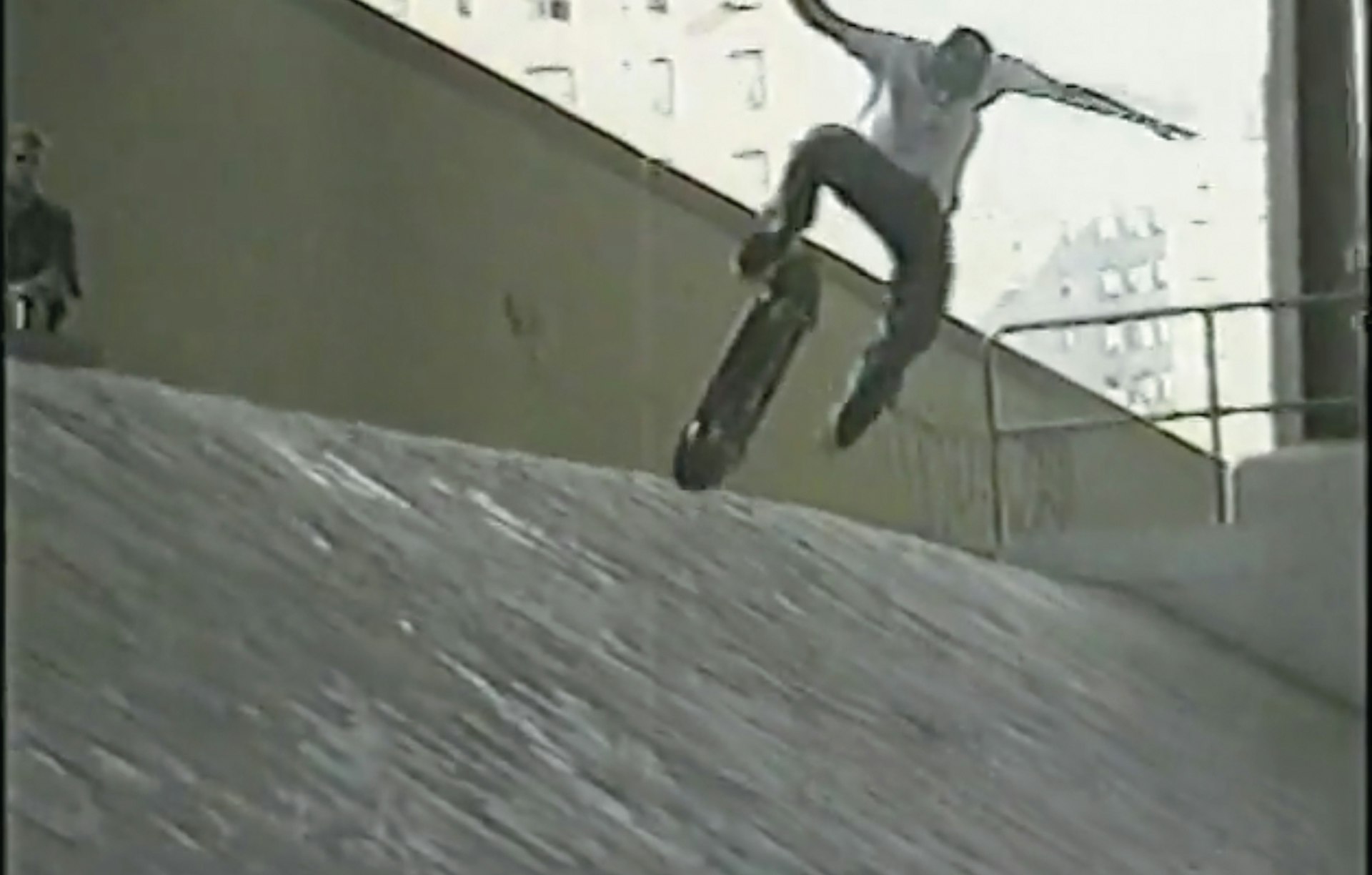
This would be the proper time to bring RB Umali into this. But before that, let’s note two other events around this time that add even more momentum. In April 1994, the Supreme Skateshop opens on Lafayette Street and immediately becomes the hangout for Zoo riders and the incubation hub of NYC’s skate scene. Then, by ’95, Harmony Korine, a longtime friend of Eli, and Larry Clark released their film, Kids. Zoo riders Harold Hunter, Justin Pierce, Jeff Pang, and more essentially play themselves on the big screen alongside Chloë Sevigny and Rosario Dawson.
Almost immediately after the 411 part and Kids, the powers that be at Zoo decide they need a full video. Eli surmises, “I’m not 100% sure when Mixtape was first discussed. But as was the case with all skate companies back then, we were like, ‘Yo! We need to make a skate video!’ But then shit happens and you never get to it. RB moved to NYC from Houston and we sort of seduced him into filming for us. After the 411 part I was too busy making product in the studio to go skate all day.”
RB: “I moved to NYC after getting accepted into NYU Film School at the end of ’96. Anthony (Correa) came out and slept on the floor of my dorm room as he went officially on to Zoo. There was no plan at first. I was out filming with everyone every day for 411, Transworld, Eastern Exposure 3, Trilogy, and FTC Penal Code. After a year of doing that I became really tight with the Zoo team. Eli, Rodney and Adam said they wanted to make a video and agreed that I was the guy to help make it happen.”
No true skate video can exist without a filmer in the trenches. RB became just that: “My 3CCD Sony VX3 was definitely the A-Cam. Eli had a Sony Hi8 Camera he let me borrow when my VX3 first went in for repairs. It might have been the same camera Eli used at the legendary WKCR sessions. Sometime in ‘97 my VX3 would glitch and randomly shut down mid-session. Sony had just announced the VX1000. I convinced Eli, Rodney and Adam to buy one for us to finish up the video with.”
That’s when I was like, ‘Ahhhh! I have all those freestyles from Stretch and Bob!’—that was, as they say in the invention business—the ‘A-Ha Moment’
Eli continues, “RB just kept stacking clips. Years went by and digital editing crept in and luckily, my friend Jamil Tore bought a Media 100 system. We had the skate footage from RB, the chance to edit digitally, we just needed an angle. A thing so New Fucking York that no one could ever talk shit on it. That’s when I was like, ‘Ahhhh! I have all those freestyles from Stretch and Bob!’. That was, as they say in the invention business, the ‘aha! moment’.”
As they moved into editing mode, the main question was which rapper’s freestyle would go with which skater’s part. Eli explains, “(Jeff) Pang was the veteran pro and loved Fat Joe so that was easy. Also obvious was Method Man ‘sing-rapping’ over the Black Moon beat. That was already legendary for hip-hop heads and Harold was blowing up from Kids – so that was a no-brainer. Gangemi was up in Boston and after we saw his footage, it was obviously going to be the closer. One of the magical things that happened was that towards the end of the Busta freestyle, Stretch threw on the ‘Champ’ beat for Busta to rap over, which is literally just drums. We looked at what we had and Gangemi does the up-rail 50-50 right when it’s just Busta rapping over this foundational drum loop. We were like “Dude! This is a capella. We can put anything over this!” So we mixed Blahzay Blahzay’s ‘Danger’ over the Busta freestyle. When the East is in the house! It all came together. It was an inspired moment.”
RB shares his memory of filming that video punctuating clip: “There was a $1000 reward from Zoo York for whoever filmed the best trick in the video and Robbie took the loot for that one (the ‘up rail’ 50-50 in Boston that ends the video before the credits sequence).”
Once the video was nearly complete, RB and Eli asked 1995 DMC World Champion DJ, the late Roc Raida, to appear and mix in the video’s intro. Eli unpacks it, “When he asked if I wanted any specific music, I had always loved the JVC Force song ‘Strong Island’. Raida got it. And I for sure wanted Kool Keith, ‘I’m Poppa Large, big shot on the East Coast.’ It was sincerely a magical day that I will cherish forever. And it’s all there in the opening of Mixtape.” Eli also created all the tag text, logos and titles throughout the video and shot the photo of Rodney Smith holding the boombox for the cover.
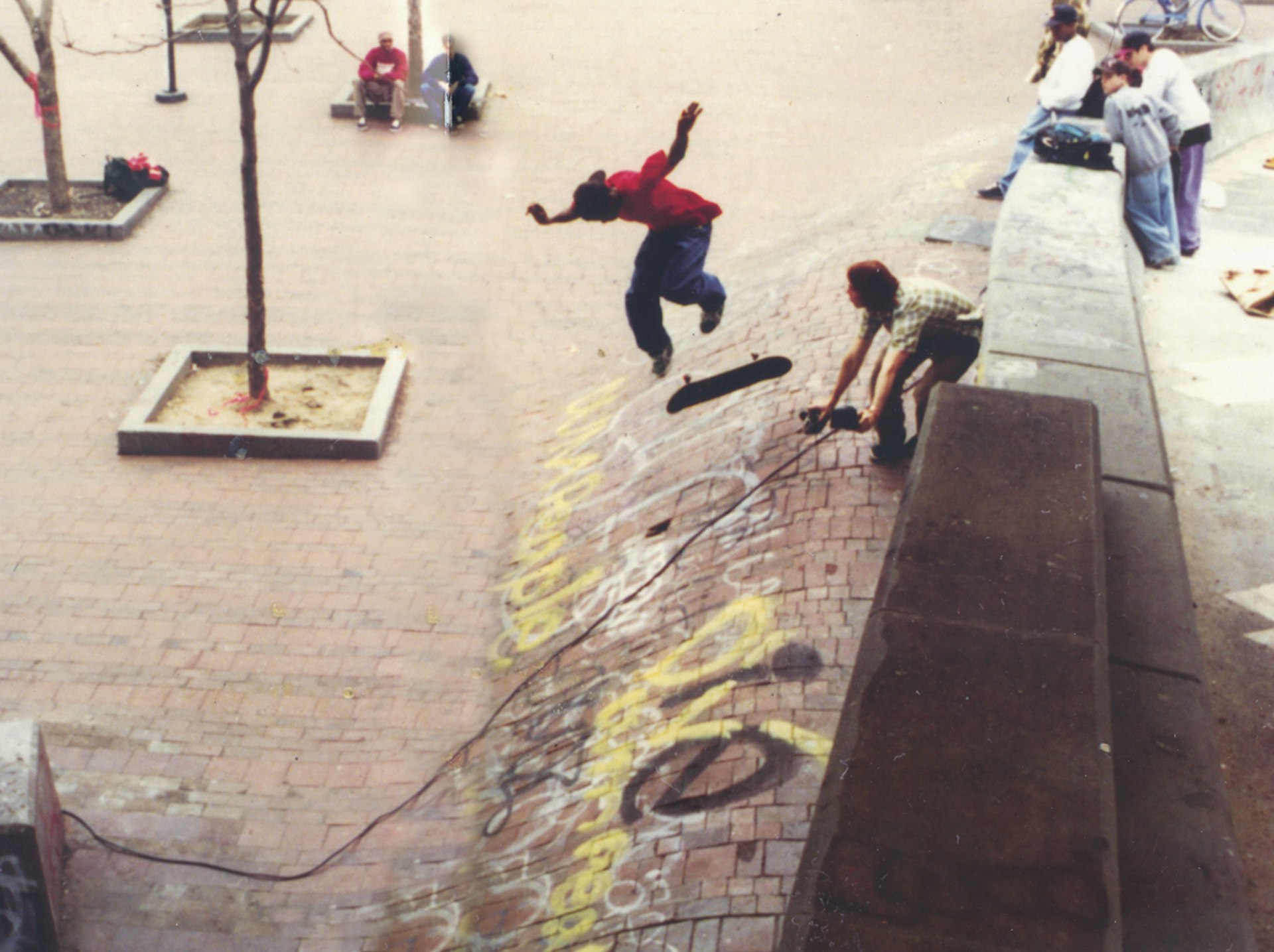

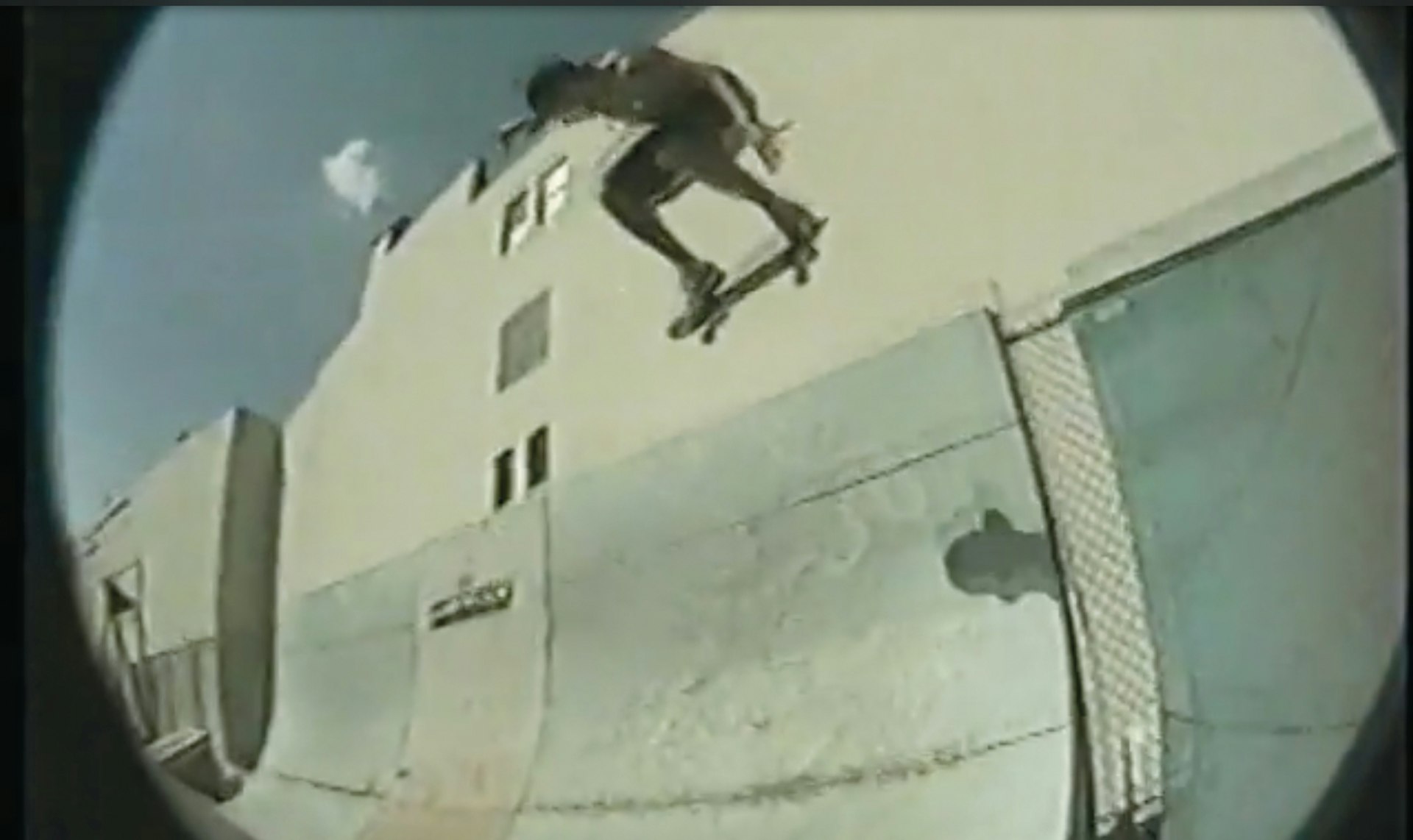
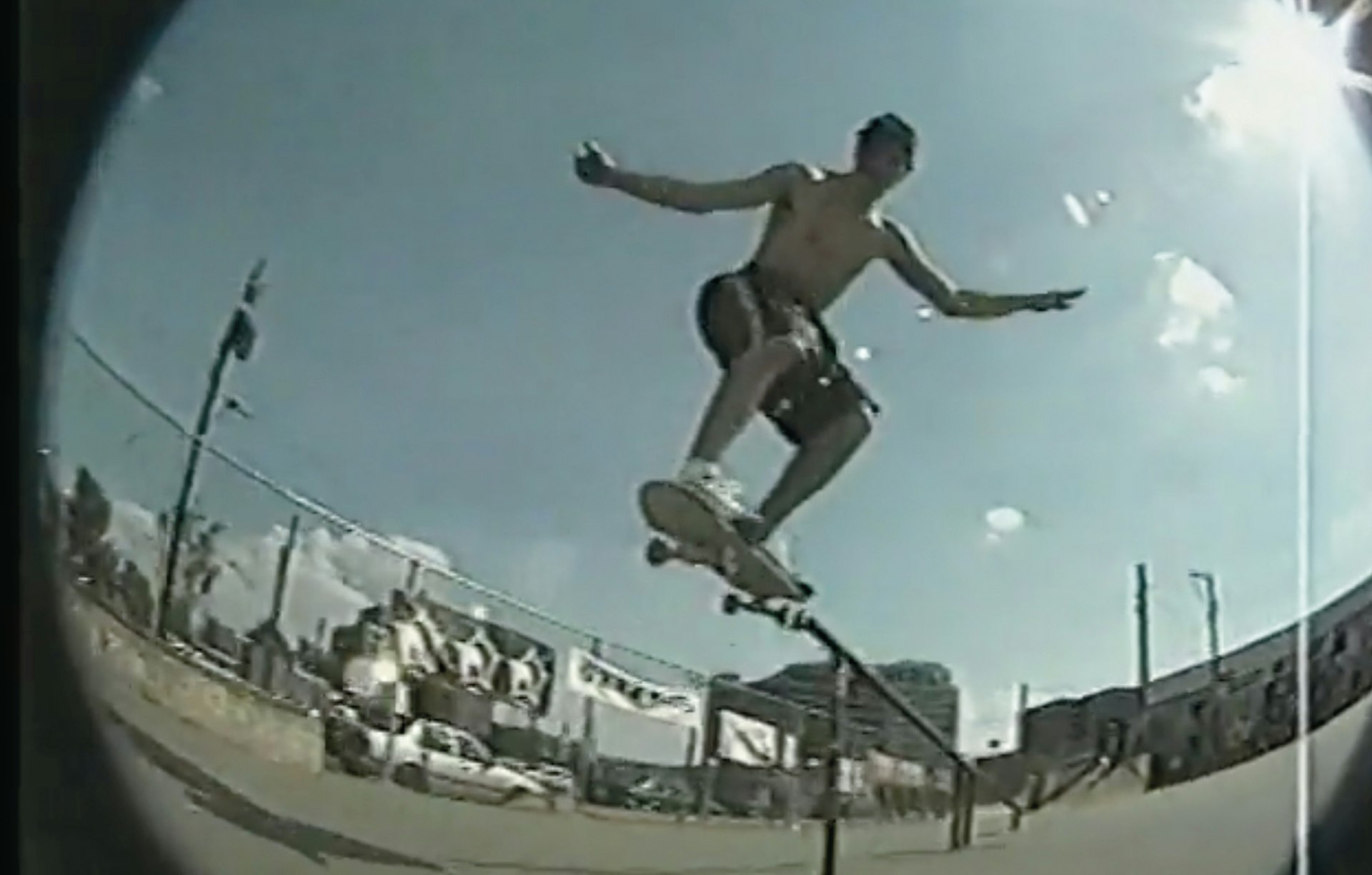
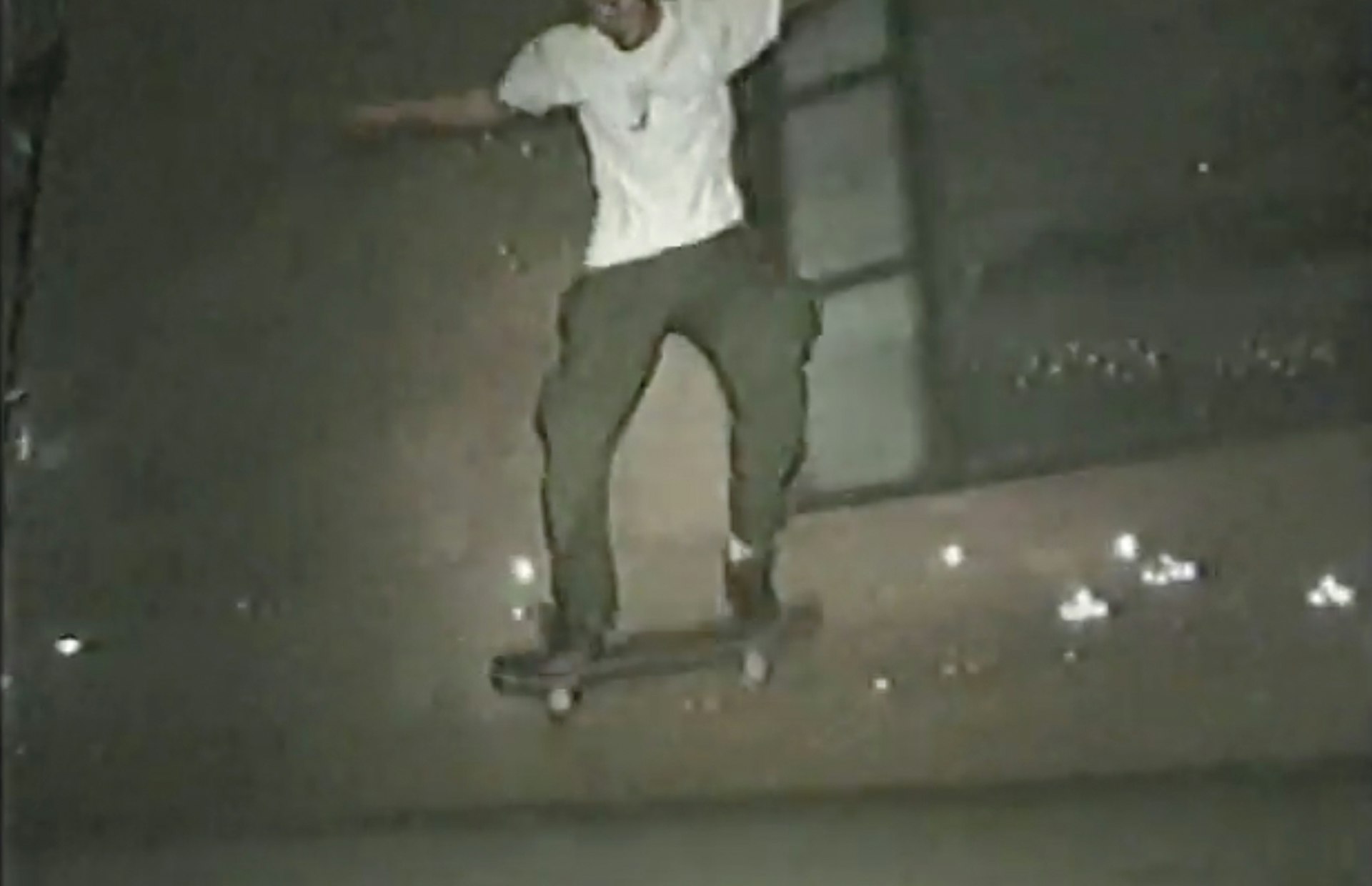
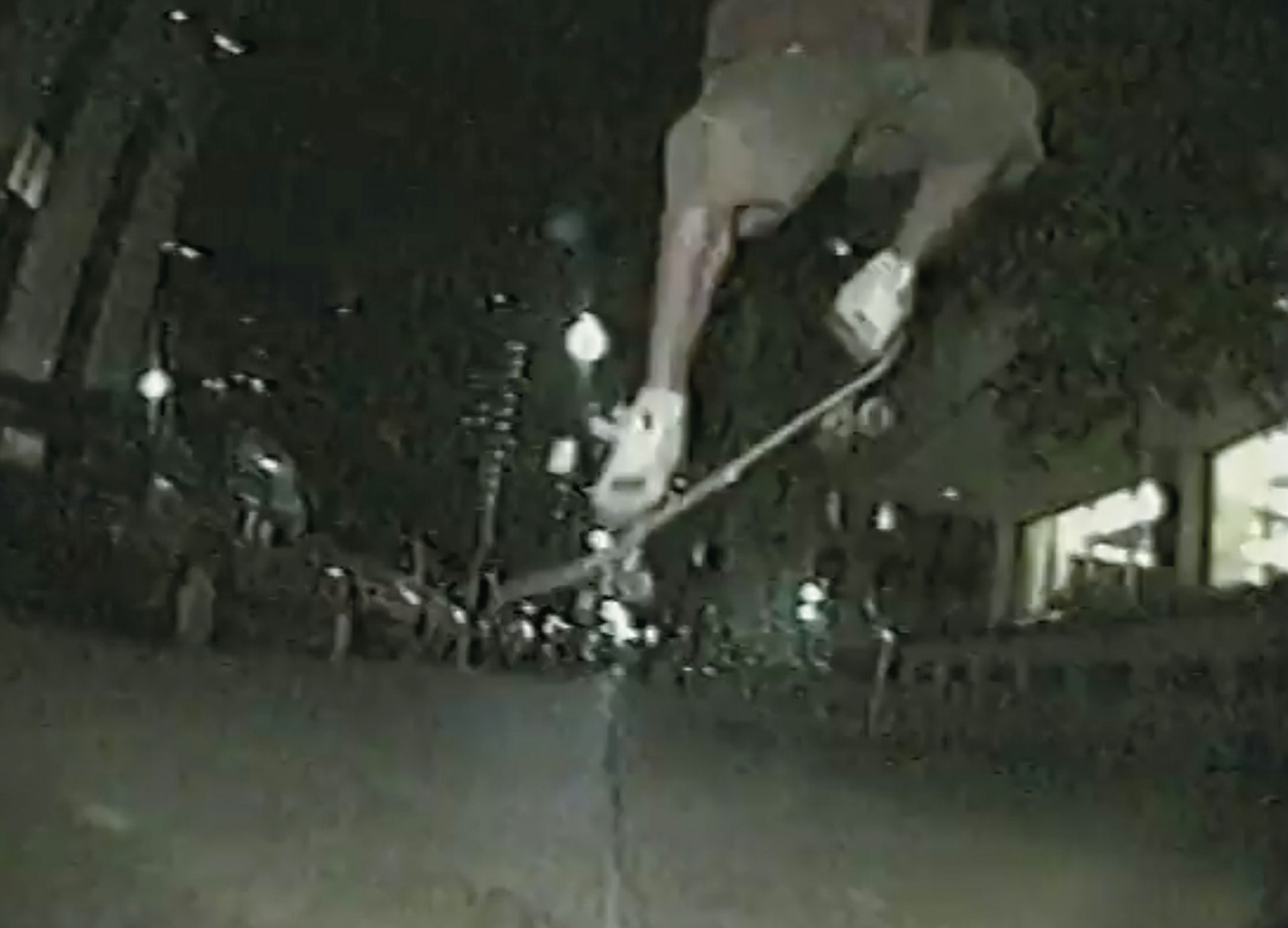
However, one massive hurdle remained – matching up all the analog audio from the radio show recordings and synching it to digital and analog video. Eli essentially made the soundtrack by hand with the help of DJ Ani Quinn using analog audio from his Hi8 footage, analog cassette recordings of the radio show (because some of the beats were played into the rapper’s headphones so they couldn’t be heard in Eli’s video footage) and the analog and digital skate footage shot by RB. They also mixed in other music to bridge the gaps in the freestyle tracks. And since most of the materials were on cassette tapes nothing would stay synched up. They resorted to speeding up and slowing down tapes by hand as they went.
“This was all done in parts, live and in one take,” Eli says. “If we fucked up we’d have to start over. It took forever. That’s why the second half of the video is just one song, ‘Bounce, Rock, Skate, Roll’ by Vaughan Mason & Crew. We were sick of editing! And in the time it took to synch all the music, RB and the guys went out on tour and got tons more footage.” That additional footage also highlighted the next generation of Zoo riders coming up including Todd Jordan, Danny Supa, and Anthony Correa. “We just dumped everything else into that montage,” Eli adds. “We were so happy to finish that the end comes off almost as a celebration.”
It is also why there has never been a DVD version of Mixtape. The interwoven layers of analog and digital audio and the process used to assemble them means the Mixtape soundtrack can really never be replicated. The VHS soundtrack itself is a work of art. And an unlicensed one at that. As there were no rights for almost all the tracks used it would be a legal minefield to try and sort out any type of official re-release.
How did it feel to finally watch the whole finished video? In Eli’s words, “Probably relief. Being an artist isn’t an instant gratification thing. It’s a kamikaze thing. You have to love, and become obsessed, with the idea of what you are making. If you did your job right, people will respond the way you hoped they would. Time is the only true critic.”
Eli and RB would spend the next few decades creating videos, products and concepts at Zoo York – even after majority shares (51%) of the brand were sold to Marc Ecko in ’01 and finally 100% sold to Iconix Brand Group in ‘11. Returning to the source, Eli and Rodney re-launched SHUT Skates in ’06. In ‘23, Mixtape’s influence and tremendous cultural value has only continued to grow. Look no further than any Bill Strobeck Supreme video or any of the multitudes of NYC crew and company videos to see the firm imprint of the cross-pollination Zoo, Eli, and RB laid down back in ‘97. Danger! And you knew it all the time.
Rest in Peace: Harold Hunter (1974-2006), Justin Pierce (1975-2000), Damani Beasley (1968-1991). DJ Roc Raida (1972-2009).
This piece appeared in Huck #80. Get your copy here.
Enjoyed this article? Like Huck on Facebook or follow us on Twitter.
Support stories like this by becoming a member of Club Huck.
